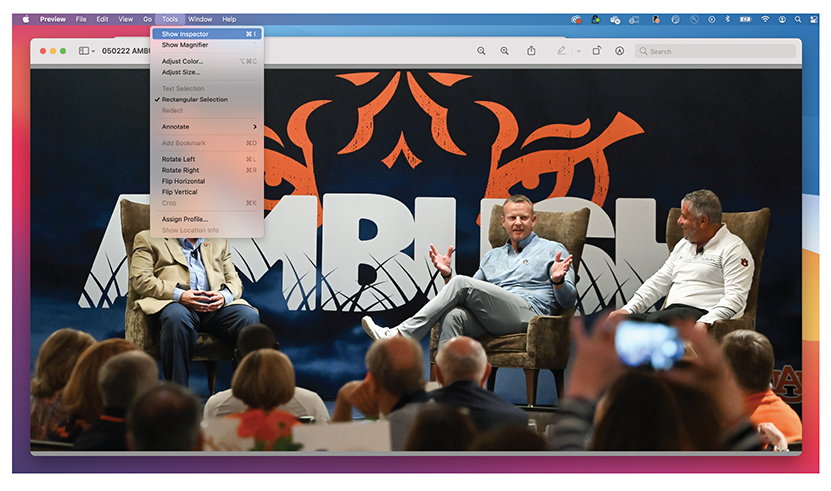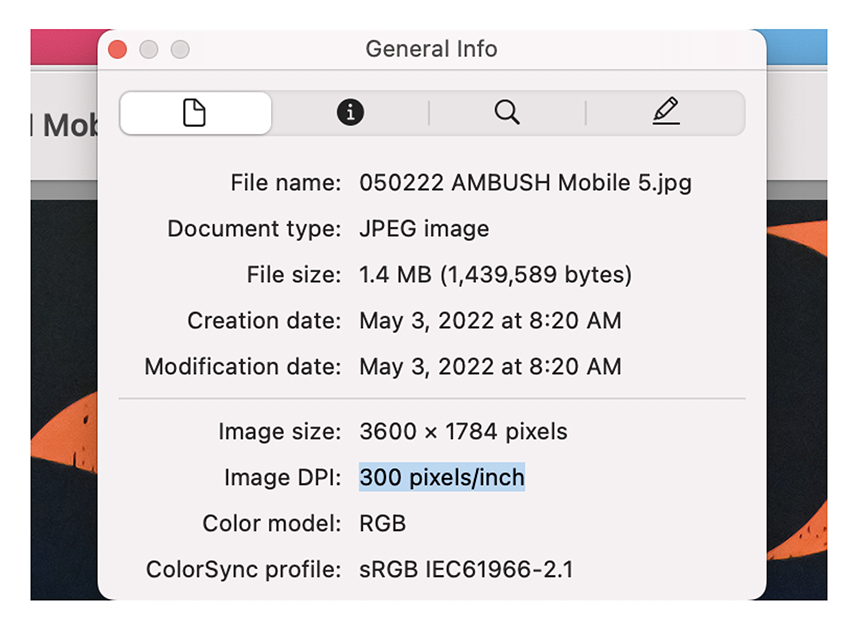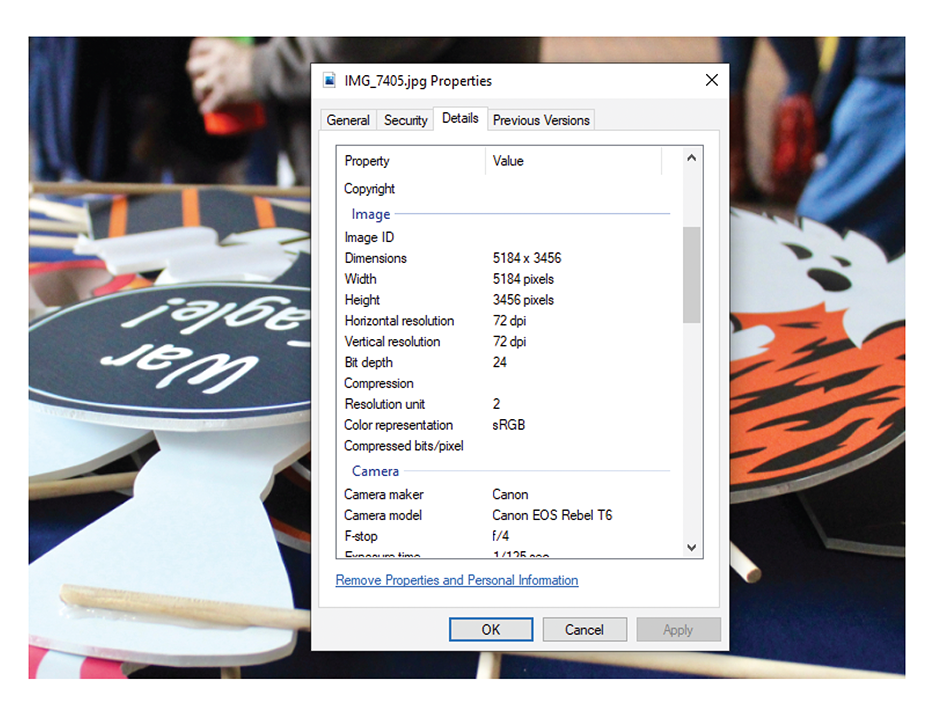By submitting this form, you give permission to have your story published by Auburn Advancement in print or online.
Tips for loading a Great Image
How to Check Image Resolution (Mac and Windows)
Mac
1. Open your image in Preview and click Tools
2. Click Show Inspector

3. A small window will appear. Check to make sure that the image DPI is at least 300 pixels/inch.

Windows
1. Find the image you want to check.
2. Right-click the image and then choose the Properties option.
3. Switch to the Details tab.
4. Scroll down to the Image section.
5. Check the information following the two values: Horizontal Resolution and Vertical Resolution.
6. If it’s not 300 pixels/inch then a photo with a higher DPI (pixels/inch) will be needed.

How to Get a Good Quality Image
1. If the photo was taken by a professional photographer, ask them for the original digital image.
2. Smartphone photos are often usuable. If the photo was taken with a smartphone, ask whoever took the photo to send you the original image from their phone. Otherwise, send it to us from your phone via email, and when the phone prompts you to choose from Small (25.1 KB), Medium (88.0 KB), Large (799 KB), or Actual Size (2.6 MB), choose Actual Size.
3. Have the photo taken by a professional photographer, or ask a friend to take a picture with your smartphone using the tips below.
Do's and Don'ts of Taking Photos with a Smartphone
DO
1. Take the picture in a work setting without others, and not only head shots.
2. Hold your phone horizontally to take pictures.
3. Set your camera’s focus by tapping the screen where you want to sharpen the view, such as on the subject.
4. Check the background and make sure wires, plants, etc., aren’t sprouting from the subject’s head.
5. Take the picture in natural light avoiding the middle of the day when the sun is too harsh.
6. If you’re sending captions, names should be from left, and they should include the name of the person who took the picture to give proper credit.
DON’T
1. Send online photos (from social media, etc.) because they’re usually too low in quality to use in the magazine.
2. Send a scanned photo, as they are typically also too low in quality for print.
3. If you use flash, only do so during the day. Sometimes, using your camera’s flash can improve a photo — but rarely does it do so at night.
Questions? Please email aubmag@auburn.edu. War Eagle!